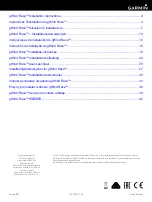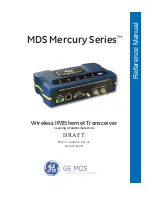
16
17
11. CONTROLS (A3.2, A4.2, A5 and A6)
11.1. A3.2 preamp
The A3.2 has five knobs. The VOLUME controls the output volume.
At “0” it is completely OFF. At “12” it is LOUD! The BASS, TREBLE
and PRES tone controls are normal boost/cut shelving controls. The
MIDDLE tone control is normal boost/cut filter. The center detent
on these tone controls yields a flat frequency response. “+” boosts
the tone; “-“ cuts the tone.
11.2. A4.2 preamp
The A4.2 has five knobs. The VOLUME controls the output volume. At
“0” it is completely OFF. At “12” it is LOUD! The BASS and TREBLE
tone controls are normal boost/cut shelving controls. The MIDDLE
tone control is normal boost/cut filter. The center detent on these
tone controls yields a flat frequency response. “+” boosts the tone;
“-“ cuts the tone.
The A4.2 also has a mix control for UST / AST mix. At the “12 / 0 AST”
position the sound is special blend of the UST and AST. This blend
is made by a frequency crossover point at 700 Hz. Sound above 700
Hz is the AST sound and sound below 700 Hz is the UST sound. At
the ” 0 / 12 ” UST position the sound is only from the UST. As the mix
control is rotated from the UST side towards the AST side the UST
high-mid and high frequency sounds gradually give way to the AST
high-mid and high frequency sounds. If one side of the mix is louder
than the other, adjust the input gain trims to balance them.
11.3. A5 preamp
The A5 has five slider type controls, two rotary controls and one
push button. The VOL slider controls the output volume. At “0” it
is completely OFF. At “+12” it is LOUD! The BASS, MID, TRE, and
PRES slider controls are a 4-band equalizer for controlling tone.
The BASS and PRES (presence) tone controls are normal boost /
cut shelving controls. The MID (midrange) and TRE (treble) tone
controls are normal boost/cut filters. The center detent on these
tone controls yields a flat frequency response. “+12” boosts the
tone; “-12“ cuts the tone.
The two rotary controls, N FRE (notch frequency) and N DEP
(notch depth), one push button control, Phase, and “Batt” LED are
described at 11.5.
11.4. A6 preamp
The A6 preamp is a dual input / single output preamp. The A6 has
five slider type controls, two rotary controls and one push button.
The VOL slider controls the output volume. At “0” it is completely
OFF. At “+12” it is LOUD! The BASS, MID, TRE slider controls are
a 3-band equalizer for controlling tone. The BASS and TRE (treble)
tone controls are normal boost/cut shelving controls. The MID (mid-
range) tone control is normal boost/cut filter. The center detent on
these tone controls yields a flat frequency response. “+12” boosts
the tone; “-12“ cuts the tone.
The A6 has a slider UST / AST mix control. This slider controls the mix
or balance of the two transducers. Set at “6/6” you will get an even
mix of what you have set with the UST / AST input gain controls (more
about that later). Pushing the slider to the “UST” side at “0/ 12” you will
get only the signal of the UST. Pushing the slider to the “AST” side at
“12/0” you will get only the signal of the AST. Everything in-between
is up to you but you will find a lot of usable sounds this way.
11.5. A5 and A6 Notch controls, phase switch and
“Batt” LED.
The two rotary controls are for feedback control. Feedback can be a
nasty and unwanted sound that sometimes happens at medium to
loud volume levels and sometimes when standing close to the speaker
that is reproducing the guitar sound. The N DEP (notch depth) and
N FRE (notch frequency) can help control feedback. The N DEP at
“0” is off; at “-6” it cuts the level of the N FRE by six decibels; and
“-15” by fifteen decibels. The N FRE indicates a range of frequencies
that can be affected from 100 Hz to 330 Hz. These should be used
sparingly as they may affect the tone. Set up by first turning the N
DEP off to the full counter clock-wise position “0”. Set the rest of
the controls to suit your taste taking care that as you do this control
any initial feedback by turning down the volume control. Once you
set your sound turn the volume control up. As you reach a feedback
threshold and hear feedback, turn the N DEP up half way and using
the N FRE finds the frequency where the feedback is reduced. Once
this is found you can move the N DEP either way to make this effect
stronger or weaker.
The PHASE button controls the phase of the transducer(s) in re-
lationship to the phase of the speaker(s) that are being used with
Summary of Contents for UST
Page 22: ...22...
Page 23: ...23 A3 2 drill hole guide...
Page 24: ...24 A4 2 drill hole guide...
Page 25: ...25 A5 and A6 preamp hole cutting guide 1 790 0585 897 156 1 6848 1248...
Page 26: ...26...
Page 27: ...27...












































